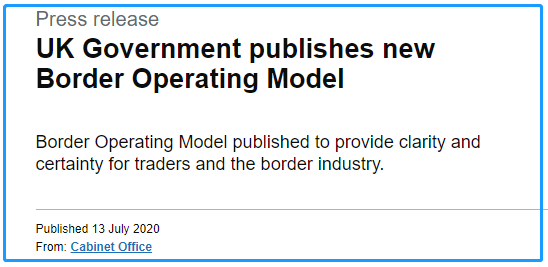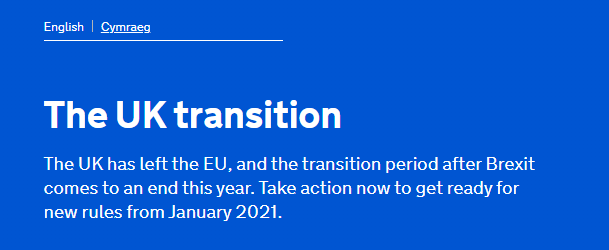What do cross-border sellers need to do to prepare for Brexit
On July 13th Britain's General Administration of Customs (HMRC) published a 206-page guide to Procedures for the Border of Goods, detailing how to control trade in goods between Britain and the EU from next year. It is the first time the UK government has detailed how it will manage trade in goods with the EU once the transition period ends. It has decided to introduce new border controls in three phases by 1 July 2021.

HMRC, UK - Editor, Tengbang
The UK is prepared to spend £705m on new infrastructure, jobs and technology to ensure that the UK border system is fully operational when it takes back control of its borders at the end of the transition period.
Sellers need to take some actions to prepare for the end of the transition:
• HMRC will check goods at ports or new border control points
• Importers can designate a freight agent or express package operator as your carrier to help enterprises import and export goods, but they must hold an import license.
• Apply for a deferred payment account.Through this deferred account the cost of your duties and import VAT can be paid by direct deduction in a lump sum each month, rather than on a single consignment
• Be prepared to pay duty and import VAT on goods entering the UK
• Apply for GB's EORI number, which must be required by all businesses transporting goods in or out of the UK

Brexit -HMRC- Editor, Tengbang
This is because the UK's transition period with the EU will end on 1 January 2021 and the UK will leave the SINGLE market and customs union (according to UK government sources, the UK will leave the single market and customs union after 31 December 2020, whatever agreement is reached with the EU).Britain would operate a complete external border as a sovereign state.While negotiations between the UK and the EU are still ongoing, including the determination of specific tariffs to be applied in different circumstances, a new customs border will be added from 1 January 2021.This would have implications for cross-border business between the UK and the EU.
From January 1, 2021, sellers on Amazon Europe will be affected by the following:
• Amazon logistics goods using the European Distribution Network (EFN) will not be able to be delivered across the UK-EU border.
• Trans-shipment of Amazon Logistics Pan-EU stock between the UK and the EU will be halted (however, AMAZON Logistics PAN-EU stock will continue to be transported within the EU to support your sales at your Sites in Germany, France, Italy and Spain).
• To mitigate the impact of these changes, it is recommended that you consider splitting your inventory and shipping it to amazon operations in the UK and the EU to ensure that you have sufficient inventory on both sides of the new customs border.
• You will need to provide the information needed to declare your goods across the new customs border between the UK and the EU.
• There will be no change in the process in the UK or THE EU for goods that the seller sends directly from China to amazon operations centres in the UK or the EU.
• A seller's self-delivery order can continue to be delivered across the UK-EU border, provided that the seller is responsible for ensuring that the required customs clearance is processed and all taxes and duties are paid before the goods are delivered to the buyer.Self-delivery orders directly delivered from China to the UK or EU countries/regions do not involve delivery across the UK-EU border, so they will not be affected.
Until January 1, 2021, your Amazon Europe site will continue to operate as usual and you will be able to use EFN and PAN-EU to sell in the 5 European countries (UK, Germany, France, Italy and Spain).However, we suggest that you now start taking steps to prepare for the new customs borders, such as VAT and EORI Numbers, and customs clearance for cross-border transport between the UK and the EU.
首发:https://mp.weixin.qq.com/s/XUQhBdU2o8zU_vXCl6kAOA
转发自邦阅网
